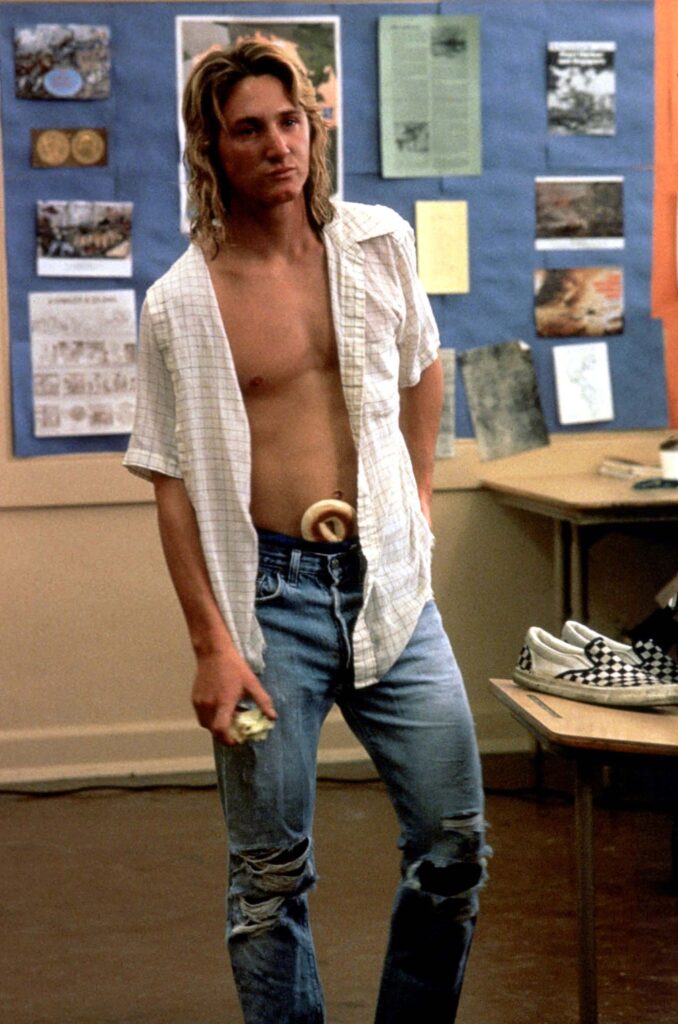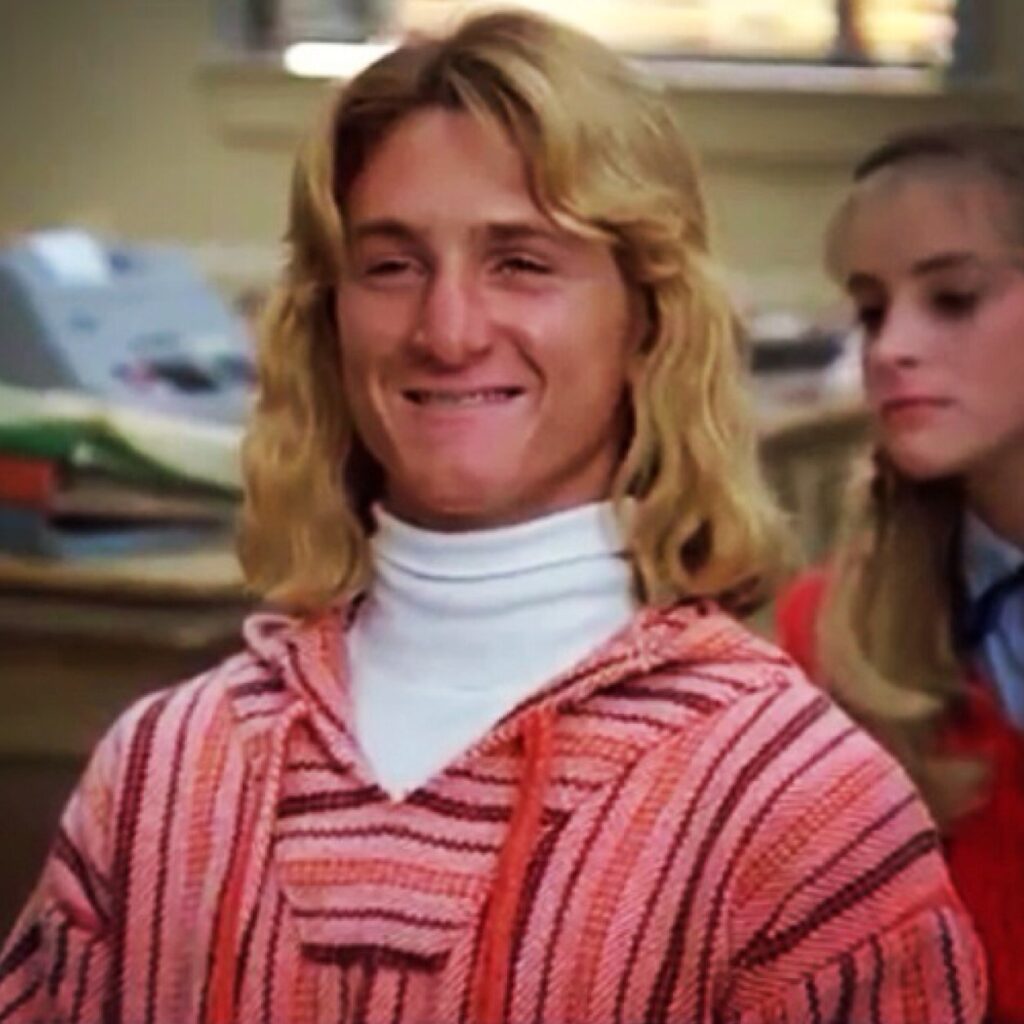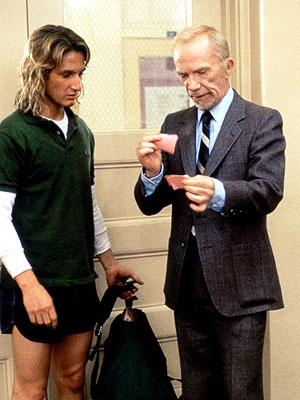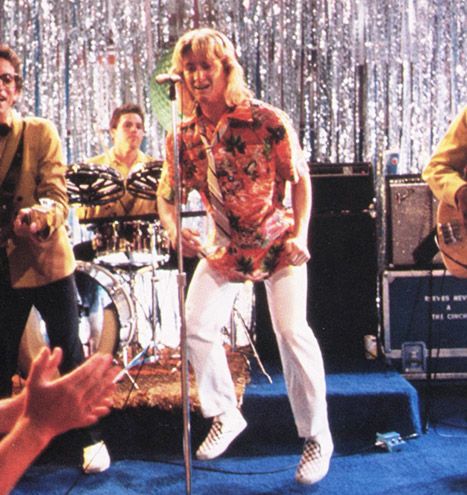An Ode to the Iconic Style of Jeff Spicoli

Fast Times at Ridgemont High featured a large ensemble cast meant to represent a typical American high school student body in 1980. The story was written as a coming of age tale that follows a pair of sophomores and a pair of juniors through a single school year. These fours students were meant to carry the film as the older pair misguides the younger pair with false wisdom. That was until Sean Penn got cast as the burnout surfer Jeff Spicoli and proceeded to steal the show. Penn slipped into his now legendary method acting process and became Spicoli for the entire shoot. Having grown up surfing in Malibu, California, Penn contributed enormously to the development of the character. As part of the development, Penn provided most of Spicoli’s iconic Southern California surfer wardrobe, including the check checkboard slip-on Vans.
Fast Times began as a book written by Cameron Crowe. In the late 1970s, when Crowe was in his early twenties, he went undercover as a student Clairemont High School in San Diego. The legendary Rolling Stone writer wanted to document the lives of typical American teenagers at the time. According to Crowe, Spicoli was based entirely on one particular student who required no embellishment. When casting began to turn the book into a film, Penn claims that the character leapt off the page to him as he read the book and screenplay. He grew up with someone who was the personification of Spicoli just as Crowe had written him. When Penn went to audition for the part, he claimed that he didn’t need to run any lines because we was Jeff Spicoli and Crowe hired him based off his enthusiasm.

The characterization of Spicoli began with Penn’s physique at the time. His shoulder length blond hair, deep tan, and sinewy build exemplified the SoCal surfer of the 1970s. Penn and costume designer Marilyn Vance adorned that frame with a wardrobe resembling a Venice Beach thrift shop. The surfer-burnout vibe projected as much from Spicoli’s outfits as it did from his stoner drawl and slack demeanor. His outfits looked thrown together with the same reckless abandon with which he lived his life. Nothing ever really matches, crossing genres and seasons, and yet it all haphazardly falls into place as Spicoli’s life seems to.
Spicoli’s most approachable look comes from his initial showdown with Mr. Hand (Below Left). He put a green Lacoste polo over a long sleeve tee (an essential piece in any surfers wardrobe). Lacoste invented the polo as a tennis shirt and it has remained ubiquitously cool for nearly a century now. The swim trunks were probably left on from an early surf session before school, a theory supported by the wet hair. Of course, the sneakers are his trademark checkoard Vans.
In a subsequent battle with Mr. Hand, Spicoli is wearing a blanket hoodie (Below Right). This fundamental piece of surfer apparel goes back almost as far as surfing in California. Legend has it that back in the 1960s, surfers started wearing ponchos from Mexico after crossing the border on surf trips. Eventually they Americanized the ponchos by adding hoods and sleeves to provide extra warmth. The distinct blanket-like fabric was not only warm and comfortable but it provided a distinct look that became an essential piece of beach culture. While you can pick one up at any surf shop in the world, Faherty offers some great options on their website.


The movie fittingly culminates with Ridgemont High’s prom where all of the characters reach the end of their story arcs. For Spicoli that means one final confrontation with Mr. Hand as he attempts to help Spicoli pass his history class. We are treated to a happy ending as the slacker student and authoritarian teacher meet halfway and Spicoli passes his final exam. All the while, Spicoli is dressed in a hawaiian shirt, white slacks and a perfectly horrible 70s tie. Hawaiian shirts entered the American wardrobe by way of California surfers after WWII. Their popularity has ebbed and flowed since then and it is certainly at high tide right now. Practically every brand is making some variation on Hawaiian shirts today but Avanti has been making them since the 1930s. A great rule to follow in fashion is that if the original is still doing it best then that’s who you should go with.

In the last scene of the film, Brad tells Spicoli that he should get a job so that he can have money. In response, Spicoli philosophically sums himself up in one brilliant sentence. “All I need are some tasty waves, a cool buzz, and I’ll be fine.” He only needs enough pocket change to feed himself because money isn’t important to him. The thrills of life are what make Spicoli happy. The same free spirited whimsy applies to his wardrobe. He only wears what makes him happy and doesn’t put too much thought into it. Style is all about self expression and few characters in cinematic history have expressed themselves through their wardrobe as effectively as Spicoli.
